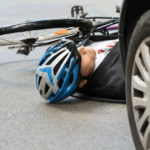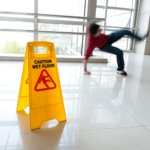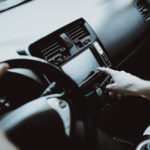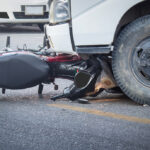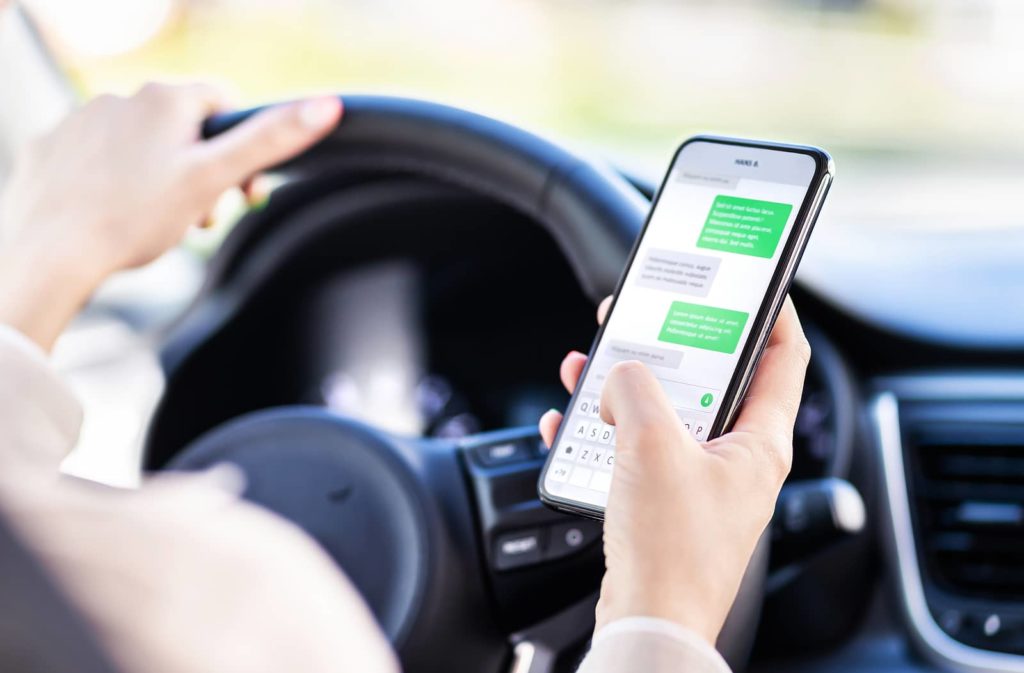
Three Types of Distracted Driving
Distracted Driving is a big topic of concern to the National Highway Traffic Safety Administration (NHTSA), CDC, National Safety Council, OSHA, California DMV, and many other advocacy organizations. Although these groups have different metrics for measuring distracted driving accidents, there is a mutual theme in every message: distracted driving is deadly. According to the NHTSA, 3,142 people were killed in distracted driving accidents in 2019. The non-profit End Distracted Driving (End DD), says that every day, more than 10 people are killed and 1,000 people are injured in accidents involving distracted drivers.
Although the term “distracted driving” is often used in conjunction with “texting and driving,” not all distracted driving accidents involve texting – or using cell phones. Understanding the three types of distractions is important in preventing them. There are three types of distractions that can occur behind the wheel:
Visual Distractions
Visual distractions include all activities that take the driver’s eyes off the road ahead of them.
- Looking at GPS directions.
- Staring at something outside the vehicle (i.e. accidents, fires, altercations on the side of the road, protests on sidewalks, etc.)
- Smartphones, the major visual distraction (i.e. texting, phone calls, video chat or FaceTime sessions, social media, etc.)
Manual Distractions
Manual distractions include all activities that cause the driver to take their hands off the wheel to accomplish a task, even for just a second.
- Eating or drinking.
- Attending to a baby or pet in the car.
- Putting on makeup or taking off jackets.
- Changing the radio.
- Texting or scrolling through social media.
Cognitive Distractions
Cognitive distractions involve anything that can cloud the driver’s mind. Mindlessly driving is the equivalent of taking your eyes off the road.
- Conversations or arguments with passengers.
- Emotional or intense phone calls.
- Stressful days at work or school.
- Feeling nervous about activities or tasks en route to your destination.
- Feeling tired or depressed.
- Grief from a sudden loss (death of a loved one, loss of a job, breakup, etc.)
Your cellphone is dangerous when you are behind the wheel because it can take your eyes, hands, and mind off of driving—effectively all three distractions. Cell phone usage in cars isn’t going away anytime soon. According to the California Office of Traffic Safety, phone usage while driving increased by about 38% at the onset of the COVID-19 pandemic.
Prevent Distracted Driving Accidents
Avoid the temptation to use your phone, or even to use hands-free devices while driving. It’s safer to check emails, make calls, send texts, and program your GPS navigation before you start driving. If you have a modern smartphone, you can set up an auto-response text, whenever your phone is attached to your vehicle’s Bluetooth, to alert texters that you are driving.
If you find yourself unable to resist looking at your phone, especially when you receive notifications, you can place your phone in airplane mode, or put it in the glove compartment while driving. If you have others in your vehicle, you can ask them to hold your phone and help hold you accountable.
The California Office of Traffic Safety’s campaign “Put Your Phone Down. Just Drive.” provides tips and information about distracted driving laws and prevention. Take the distracted driving quiz at gosafelyca.org.
Are Social Media Apps Part of the Distracted Driving Problem?
Odds are you’ve seen videos on social media or Youtube taken by someone who was also driving. Cell phones allow people to share every minute of their lives in video clips and “stories.” One social media outlet created a feature that would indicate travel speeds, which led to something of a challenge. From 2013 to 2021, the social media app ‘Snapchat’ had a “speed filter” which allowed its users to display how fast they were traveling when a video was taken. Multiple accidents occurred when individuals were trying to go faster than 100 mph and display the speed in a video clip. If you have teenage drivers in your house, educate them on the dangers of these reckless stunts.
Distracted Driving Accidents Involving Company Owned Vehicles
Many larger companies have established policies to reduce distracted driving, and require employees and contractors to participate in defensive driving classes like the Smith Driving System which emphasizes the risks and possible consequences of driving while distracted. Additionally, employees may be prohibited from using company-issued phones while driving their personal vehicles. When distracted driving accidents are caused by employees operating company-owned cars or trucks, the companies may be liable.
Speak with an Experienced Orange County Car Accident Attorney
If you or a loved one were involved in an accident you suspect to be caused by a distracted driver, you may be able to recover compensation. The Orange County personal injury lawyers at the Law Offices of Samer Habbas & Associates can help! With multiple offices located in Irvine, Anaheim, Los Angeles, El Segundo, Riverside, and San Diego, our car accident attorneys have represented personal injury victims all across Southern California. For more information or to schedule a complimentary consultation, please call 949-727-9300.
Samer Habbas, Esq
State Bar: #243683
Samer Habbas is a California attorney with over 15 years of experience in personal injury law. Throughout his career, he has successfully recovered over $300 million for his clients, solidifying his reputation as a leading advocate in the field.
Samer swiftly gained recognition for his adept negotiation skills and unwavering dedication to his clients. His practice spans a wide range of personal injury cases, including car accidents, dog bites, funeral home abuse, premises liability, and wrongful death.
Samer is known for his compassionate approach and commitment to securing favorable outcomes for his clients. His expertise has earned him the trust and respect of both his clients and his peers within the legal community. He is also deeply invested in giving back to his community. He actively participates in pro bono work and volunteers his time to various charitable organizations. Samer is a champion for those who have been wronged, leveraging his extensive experience and expertise to make a meaningful difference in the lives of his clients and his community.
Recent Post
-
April 24, 2024
-
April 15, 2024
-
April 12, 2024
-
April 9, 2024
-
April 8, 2024









